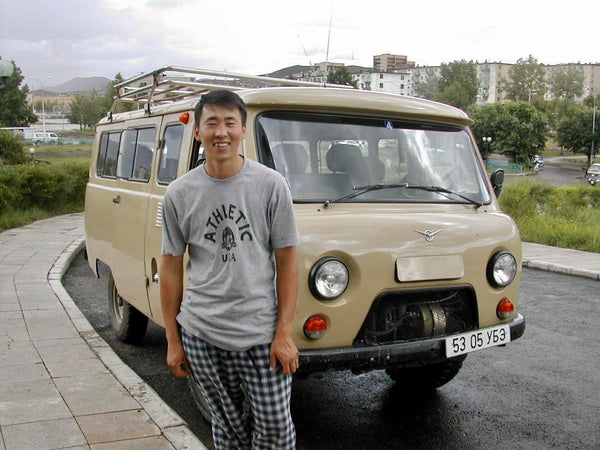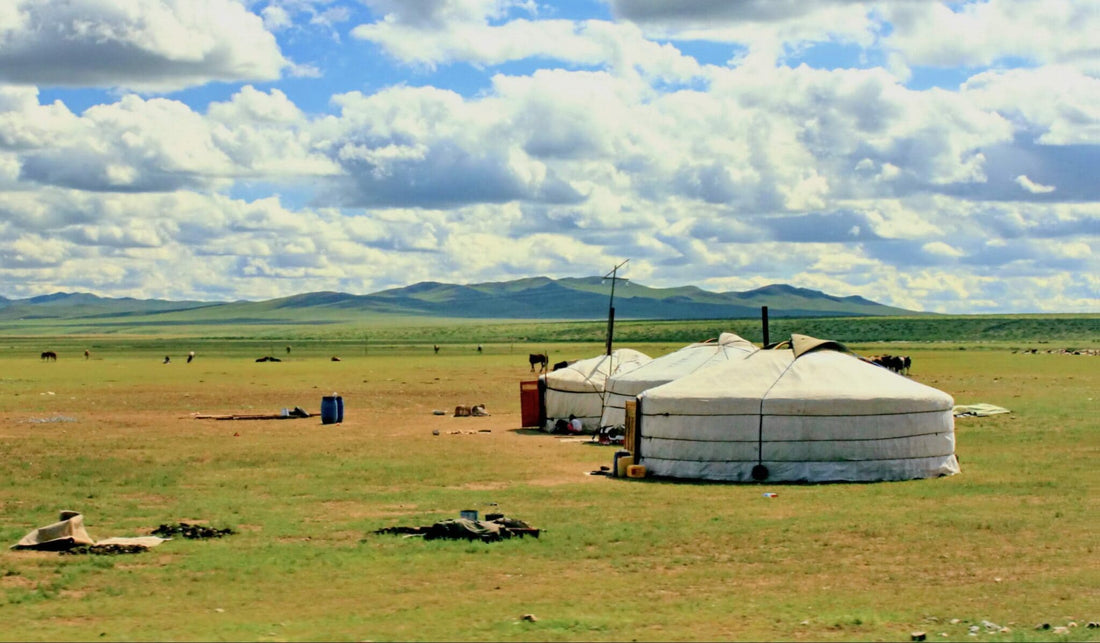It’s morning in Ulan Bator, Mongolia. I feel green, shaken and dehydrated from a rather spectacular night of diarrhea and vomiting. In matters of revenge, Montezuma has got nothing on Genghis Khan.
Comforting me, snuggled close to my exhausted abdomen is an adorable, stunted little black cat with half an ear missing.
The last year’s winter was classified as a “Zud” by Mongolia’s government. A Zud is a winter so harsh that it completely covers the grasslands with a season-long permafrost, burying the only source of food for the herds that sustain this country. Over three million sheep, goats, camels and horses were lost to starvation and frostbite. As well as half a feline ear.
My furry little Mongolian friend is in a deep shamanic trance, muttering some nasal invocation of healing to speed my recovery. Or, more likely, snoring and talking in her sleep while chasing prey in the big world of her dreams. Either way, when alone, far from home, and not feeling perfectly well, the simple unconditional company of a borrowed pet works its soft magic.
It’s a good day to tell my story…I’ll start at the end.
******
Arriving back in Mongolia’s capitol felt somehow empty after weeks of living and working with the nomads that sparsely populate the vast steppes of this raw and beautiful country.
A few days prior in that remote countryside, western and Mongolian eyes turned glassy during an emotional good-bye as we loaded onto the van to depart. It always amazes me how close people can get in such a short time, especially with only facial expressions, a handful of semi-intelligible words from a phrase book, and my apparently comical attempts at pronunciation of the written Mongolian Cyrillic.
I fell in love with these people. Living as their forbears have for centuries in a distinct, loosely-knit rural society, hospitality is of paramount cultural importance. Socializing is ingrained in the very fabric of their daily lives, and doors are always open. It is commonplace for total strangers to arrive unannounced and be welcomed warmly no matter what other things the family may have been involved in. They love to talk, or just sit with guests in a silence devoid of awkward expectation.

There is no word for ‘please’ in Mongolian – their unpretentious courtesy is simply a way of life.
On paper, Mongolia is a poor country, but there is no sense of poverty in the countryside. In terms of traditional society, not much has changed out here for a very long time. Our standards as to what comprises a fulfilled life simply don’t apply.
******
In its heyday as one of the largest Buddhist temples in Mongolia, Baldan Baravain flourished as a center for education, religion and culture for over 200 years, until communist China ended its glory. In 1937, under the pretense of needing information on the monks to assess taxes, the occupation authorities were able to compile a list of the Lamas by hierarchy. The most senior third of the temple’s monks were immediately shot. The next third was sent to work camps in Siberia and never heard from again. The youngest third of monks were allowed to return to their families. All in all, over 3,000 monks and nuns were slaughtered and their temple destroyed.
Practicing Buddhism in Mongolia only became legal again in the 1990s. In 2002, I joined a small team of Americans determined to restore the ruined temple to its former glory and reestablish the community. As altruistic as that may sound, these people had been betrayed by foreigners their whole lives and not surprisingly, the local Mongolian craftsmen and masons who were hired to help us with the restoration doubted our intentions. Rumors circulated that we were secretly building our summer palace and would kick them out once it was completed.
******
My journey to the ruins of Baldan Baravain started in early morning as we embarked in what I can only describe as a minibus crossed with a tank. Built in Russia, as most of Mongolia’s vehicles are, this machine is a marvel. At first, I remembered its name as “Flowbee,” but that turned out to be a vacuum-driven haircutting device touted on campy late-night infomercials (alas, it seems my spongy, advertising-soaked brain was traveling with me). Our affable young driver, Bagi, referred to it as a “Forgon,” and it is designed with a philosophy different than our western consumerist economy would understand or allow: the vehicle’s shape and parts barely change over decades. Spare parts are interchangeable across model years, making repairs in the remote countryside possible – a feature I found myself very grateful for on the journey ahead.
A few miles out of the capitol, the terrain changes to an endless expanse of green hills, the kind that impels you to run with abandon, head back, arms wide in the wind, smiling, and egged on by the syrupy orchestral music in your head.
An hour into our ride east on a roughly paved road built with Japan’s financial help, it became obvious that the funds ran out, as did the road. Bagi, our driver, calmly wheeling headlong towards a deliberate and definitive roadblock, revealed no intimation of slowing down. My knuckles turned white on the door handle. A few feet before the barrier, Bagi made a well-executed hard right and we were on what would be for us another nine hours of off-road insanity, careening through a land with little resembling a road, no traffic signs or advertising at all, and to make it really interesting, no seat belts! Dodging marmot holes, sheep and goats at 60 kph would at times have us airborne, as young Bagi, who knew his vehicle well, surfed the waves of green turf nonplussed –possibly without the knowledge that he was defying both gravity and some laws of physics at every turn.
My respect for the Flowbee (sorry, the name just stuck) and Bagi increased with every mile. The machine was obviously built for this terrain and our driver proved competent in piloting the two tons of steel and humanity. Some color returned to my knuckles.

Venturing deeper into the green, a sight off to the right took my breath away…wild horses, dozens of them, galloping on the grassland like a school of fish, leaderless, manes windswept, muscled bodies shining in the sun, joyous. It was like a dream. I wanted to go out and run with them through their home. I now understand why even around a race track these beautiful creatures run – it’s programmed into their cellular memory. They simply have to.
As a wild land, Mongolia shows its bounty of nature untouched. A dark blur on the bumpy terrain ahead caught my attention – maybe a marmot? no, too big – it was standing almost a yard tall; perhaps a species of feral dog? Since it stood in our path, Bagi actually slowed down. Holding us fast in its majestic gaze, it didn’t move as we approached, obviously unimpressed by the purring mass of steel in which we were ensconced. We stopped, three feet and an open window between its fierce beauty and my unprotected pate, the astonishingly large golden eagle locked defiantly onto my eyes, its power over me mesmerizing. As I fumbled for my camera, this regal native released its gaze and took wing, disappearing into its blue domain.
My arm, extended out the window, felt its first drops of Mongolian rain. In a heartbeat the sky relieved its clouds of their burden and drowned what earlier passed as semi-navigable tracks under fast silvery rivers. Not surprisingly, this beautiful display of nature’s power didn’t make lighter our driver’s weighty foot. Bagi just turned on the wipers and continued his unruffled command, expertly turning into the spins as our rear wheels lost their grip in the slick mud. There were never any discernible landmarks to guide us along our route, so not being able to see anything at all didn’t seem to be a problem. Out here, you either know the way or you’re vulture food.
******
Mongolia is one of the least-touristed countries in the world, attracting only 28,000 foreigners a year. For perspective, during its entire tourist season, this country gets as many visitors as Thailand attracts each week. In the countryside, where most of Mongolia’s 2.3 million people live, many young faces look like they’ve never seen a foreigner. I felt like quite an attraction as we passed through the occasional settlement.
My first sight of the ruins of Baldan Baravain was breathtaking. I can only imagine what awe it inspired when it was active and whole. The sun was low on the horizon, illuminating the temple with a warm glow. The valley that enshrouds the monastery is so beautiful I found myself just staring, open-jawed. As we pulled up to the camp, we were greeted by a smiling young man named Guré, the newly ordained Lama of Baldan Baravain, who would become a friend to us all.
Part Two will follow in a future issue.
Header image courtesy of Wikipedia/Marcin Konsek.



